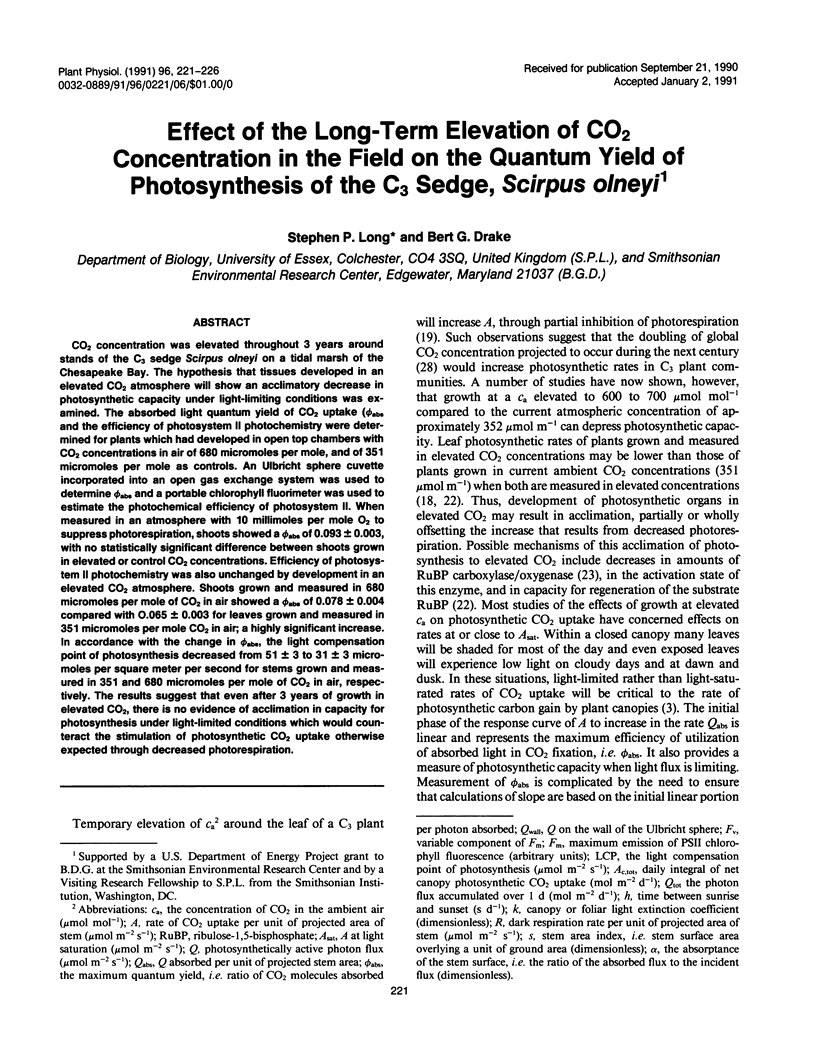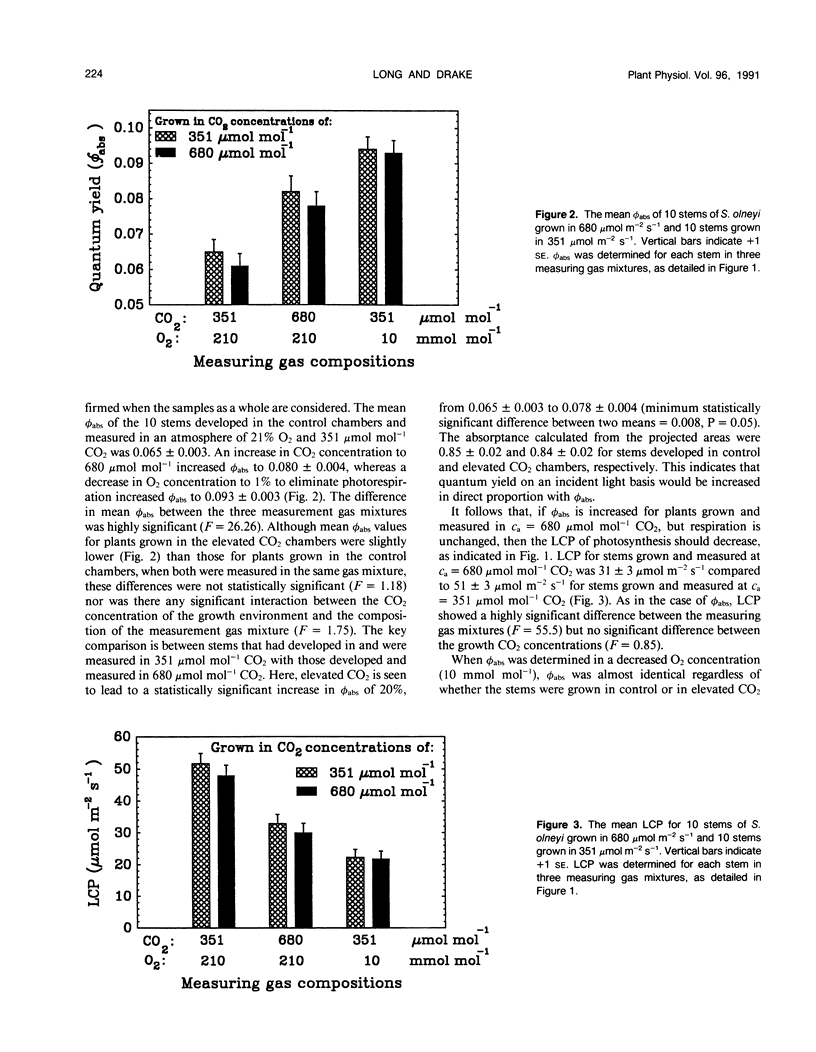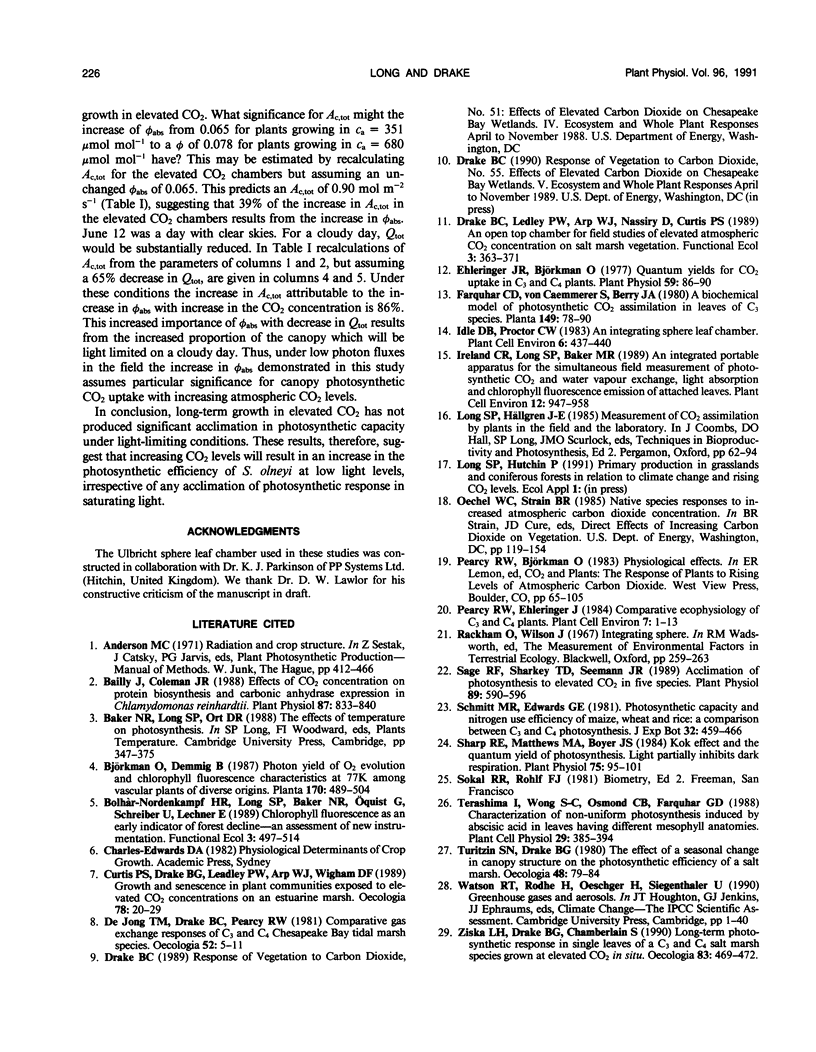Abstract
CO2 concentration was elevated throughout 3 years around stands of the C3 sedge Scirpus olneyi on a tidal marsh of the Chesapeake Bay. The hypothesis that tissues developed in an elevated CO2 atmosphere will show an acclimatory decrease in photosynthetic capacity under light-limiting conditions was examined. The absorbed light quantum yield of CO2 uptake (øabs and the efficiency of photosystem II photochemistry were determined for plants which had developed in open top chambers with CO2 concentrations in air of 680 micromoles per mole, and of 351 micromoles per mole as controls. An Ulbricht sphere cuvette incorporated into an open gas exchange system was used to determine øabs and a portable chlorophyll fluorimeter was used to estimate the photochemical efficiency of photosystem II. When measured in an atmosphere with 10 millimoles per mole O2 to suppress photorespiration, shoots showed a øabs of 0.093 ± 0.003, with no statistically significant difference between shoots grown in elevated or control CO2 concentrations. Efficiency of photosystem II photochemistry was also unchanged by development in an elevated CO2 atmosphere. Shoots grown and measured in 680 micromoles per mole of CO2 in air showed a øabs of 0.078 ± 0.004 compared with 0.065 ± 0.003 for leaves grown and measured in 351 micromoles per mole CO2 in air; a highly significant increase. In accordance with the change in øabs, the light compensation point of photosynthesis decreased from 51 ± 3 to 31 ± 3 micro-moles per square meter per second for stems grown and measured in 351 and 680 micromoles per mole of CO2 in air, respectively. The results suggest that even after 3 years of growth in elevated CO2, there is no evidence of acclimation in capacity for photosynthesis under light-limited conditions which would counteract the stimulation of photosynthetic CO2 uptake otherwise expected through decreased photorespiration.
Full text
PDF





Selected References
These references are in PubMed. This may not be the complete list of references from this article.
- Bailly J., Coleman J. R. Effect of CO(2) Concentration on Protein Biosynthesis and Carbonic Anhydrase Expression in Chlamydomonas reinhardtii. Plant Physiol. 1988 Aug;87(4):833–840. doi: 10.1104/pp.87.4.833. [DOI] [PMC free article] [PubMed] [Google Scholar]
- Ehleringer J., Björkman O. Quantum Yields for CO(2) Uptake in C(3) and C(4) Plants: Dependence on Temperature, CO(2), and O(2) Concentration. Plant Physiol. 1977 Jan;59(1):86–90. doi: 10.1104/pp.59.1.86. [DOI] [PMC free article] [PubMed] [Google Scholar]
- Sage R. F., Sharkey T. D., Seemann J. R. Acclimation of Photosynthesis to Elevated CO(2) in Five C(3) Species. Plant Physiol. 1989 Feb;89(2):590–596. doi: 10.1104/pp.89.2.590. [DOI] [PMC free article] [PubMed] [Google Scholar]
- Sharp R. E., Matthews M. A., Boyer J. S. Kok effect and the quantum yield of photosynthesis : light partially inhibits dark respiration. Plant Physiol. 1984 May;75(1):95–101. doi: 10.1104/pp.75.1.95. [DOI] [PMC free article] [PubMed] [Google Scholar]


